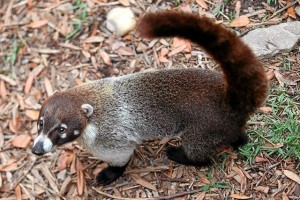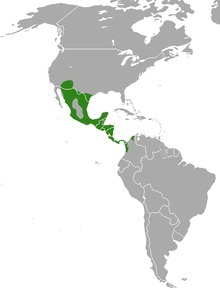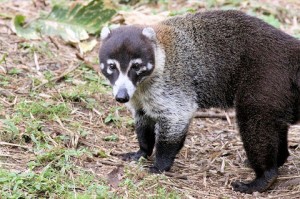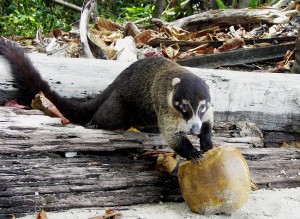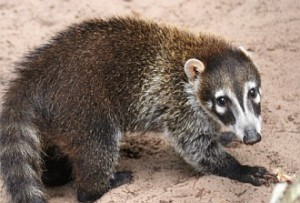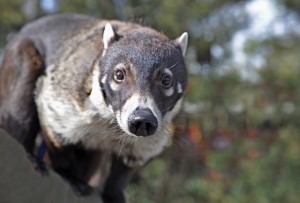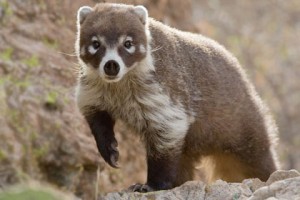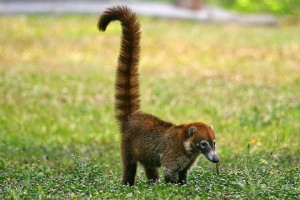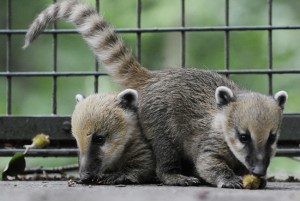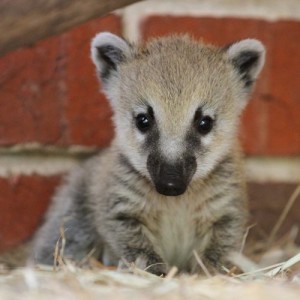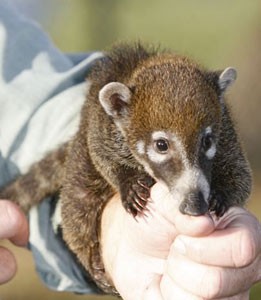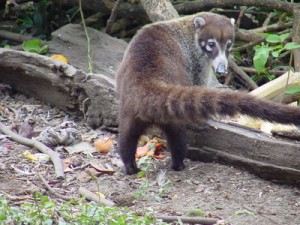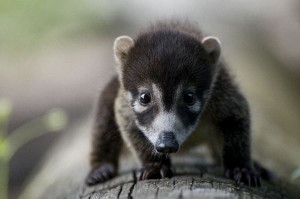White-Nosed Coati (Coatimundi)
White-nosed Coati, also called Coatimundi, is a species of mammals belonging to the raccoon family indigenous to the southwestern North America, Central America, and South America. It has a narrow, elongated head with small, rounded ears and a pointed, flexible snout that is somewhat tilted up while its tail is furry and tapers to the tip. Its face has a dark brown or blackish gray color with white patches occurring around its ears, nose, and eyes.
Scientific Classification of Coatimundi
| Kingdom | Animalia |
| Phylum | Chordata |
| Class | Mammalia |
| Order | Carnivora |
| Family | Procyonidae |
| Genus | Nasua |
| Scientific Name | Nasua narica |
Quick Information
| Other Names | Coati à museau blanc, Coati à nez blanc (French); Coatí de nariz blanca (Spanish); Pizote, Tejón, Antoon (Local Names) |
| Subspecies |
|
| Size | Head-body length: 46-69 cmTail: 49-62 cm Hind foot: 9-15 cm |
| Weight | 8.8-13.2 lbs (4-6 kg) on average |
| Color | Dark brown upperparts, grizzled gray forequarters, dark brown tail and feet, light rings on the tail, frosted white chest and throat, frosted white/dark brown belly |
| Distribution | Arizona and southern New Mexico (United States), Mexico, Central America, Panama, west of the Andes (South America) |
| Habitat | Open forests, woodlands, desert, open grasslands, chaparral coniferous forests, isolated mountain ranges |
| Sounds | Emits soft humming sounds to communicate, uses a combination of woofing and clicking to sound off an alarm call |
| Lifespan | 14 years (in the wild) |
| Diet | Omnivorous animals; primarily feed on insects such as spiders, beetles, ants, termites, centipedes, land crabs, grubs, scorpions; also eats fruits and occasionally hunts small vertebrates including lizards, frogs, and mice, sometimes take carrion |
| Adaptations | Long snout used for poking under rocks as well as into small fissures helps in searching for food; long, powerful claws aid in digging; tail is used for balancing while climbing trees |
| Diseases | Rabies, canine distemper |
| Breeding Season | January-March |
| Size of litter | 2-7 babies |
| Gestation Period | 77-78 days |
| Predators | Birds of prey, Tayras, boas, hunting cats |
| IUCN Conservation Status | Least Concern |
Coatimundi Behaviors
The coatimundis are predominantly diurnal animals though some adult males are occasionally active at night. During the day, they spend most of the time on the ground keeping their long muzzles low to sniff out food, but they take shelter in treetops to avoid predators at night.
Male coatis are solitary, and they establish their territories through scent marks by spreading anal secretions and urine. On the other hand, females live and travel with young coatis in bands comprising 4-40 individuals. Not just the mothers, but other females in a social group also take part in grooming and nursing babies.
Mating and Reproduction
Once the most dominant male is allowed to join the band of females, it starts mating with each of the female members. Soon afterward, the female coatis force the male to leave the band since adult males tend to kill juveniles. About 3-4 weeks prior to giving birth, the female white-nosed coati leaves the group and starts building a nest in tree crevices.
Life Cycle
The newborns do not have fully developed eyes and are fed by their mother, who leaves the nest in search of food. After 5 months, the young ones along with their mother leave the nest and join their band. Even though weaned at 4 months, the young coatis remain under their mother’s care until she departs the group to give birth. They become sexually matured at 2-3 years of age.
Interesting Facts
- In some areas, white-nosed coatis are hunted by the local people for meat.
- Like raccoons, the coatis are not shy of human presence. In fact, they are known to raid campsites as well as trash containers.
- These intelligent animals can be easily tamed.
References
- https://en.wikipedia.org/wiki/White-nosed_coati
- http://animaldiversity.org/accounts/Nasua_narica/
- http://www.nhptv.org/natureworks/coati.htm
- https://animalia.bio/white-nosed-coati
- https://www.iucnredlist.org/species/41683/45216060
Published on April 15th 2016 by admin under Coniferous Forest Animals.
Article was last reviewed on 5th December 2024.


